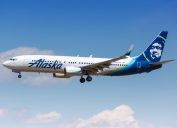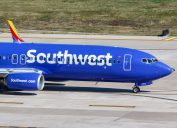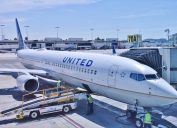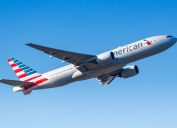Reclining Seats Are Disappearing on Airplanes
Recent changes in the airline industry could make it harder to lie back on your next flight.
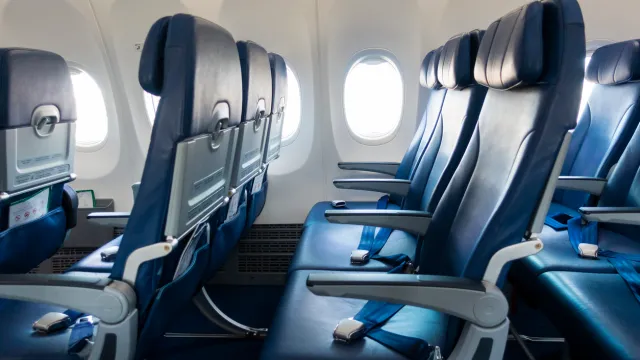
Personal space is a precious commodity on planes, where just an inch can sometimes be the difference between a comfortable flight and an agonizing experience. Of course, this is why many flyers take the seat they get on the plane very seriously—sometimes even beyond their preference for the aisle or window. Of course, one of the few areas of comfort can be hitting the recline button after takeoff to help yourself get to sleep or to stretch out aching joints. But you might not be able to count on this for too long, as recent trends show reclining seats are now disappearing on some airplanes.
RELATED: Travelers Are Boycotting Southwest Over New Boarding Change.
It's no secret that taking the liberty to tip your seat back a few inches is the source of heated debate—and many midflight feuds—for travelers. But airlines have also begun to question how practical it is for passengers to be able to kick back a bit.
Budget carrier Ryanair was one of the first to remove the option two decades ago before other low-cost companies followed suit with "pre-reclined" seats in the following years, The Sun reports. By 2019, major U.S. airlines started to cut back recline options on their planes, beginning with Delta's decision to reduce its economy seat swivel from 4 inches down to just 2 in many of its short-haul planes. Southwest Airlines, American, and United all soon followed suit.
Delta clarified when it made its decision that the move had nothing to do with adding more seats or passengers to its planes, CNN reported. However, there are other valid reasons that carriers may be choosing to do away with the comfort feature.
In addition to adding to passengers' grief and getting on their nerves, reclining seats can actually wind up costing airlines more money in the end, CNN reports. Mechanisms that allow for the movement can break and require costly repairs. They also add a considerable amount of weight to an airplane, which results in needing to burn more expensive fuel.
The changes have also resulted in some other cabin rearrangements over the past decade that benefit those able to shell out more for airfare. Once full-cost carriers began adding many of the slimmed-down seats found on low-budget competitors' planes, airlines have added new tiers of seating billed as "economy plus," CNN reports. In addition to extra legroom and possibly access to a power outlet, these higher-paying passengers might also have the luxury of a little extra recline.
In the future, pushing your seat back might look a little different. Some international airlines—including ANA, Cathay Pacific, and Air Asia—began installing "fixed shell" seats years ago that allow passengers to slide forward within a shell without robbing a rear neighbor of any precious space, The Points Guy previously reported.
For the time being, those planning long-haul flights likely won't have to worry about their recline button going missing, CNN reports. But experts still suggest being mindful of using yours by saving it only for sleeping and returning it to the upright position during meal service. And of course, remembering to always be considerate of others can help.
"Airplanes these days are tight, and a bit of consideration can go a long way in making everyone more comfortable," Jodi R.R. Smith, president of Mannersmith Etiquette Consulting, told Reader's Digest. "Before I board a plane, with all of the annoyance and indignities, I remind myself that I will be in a chair, in the sky and how much faster it will be than other modes of transportation. A bit of perspective can shift your attitude towards the positive."
RELATED: For more up-to-date information, sign up for our daily newsletter.


